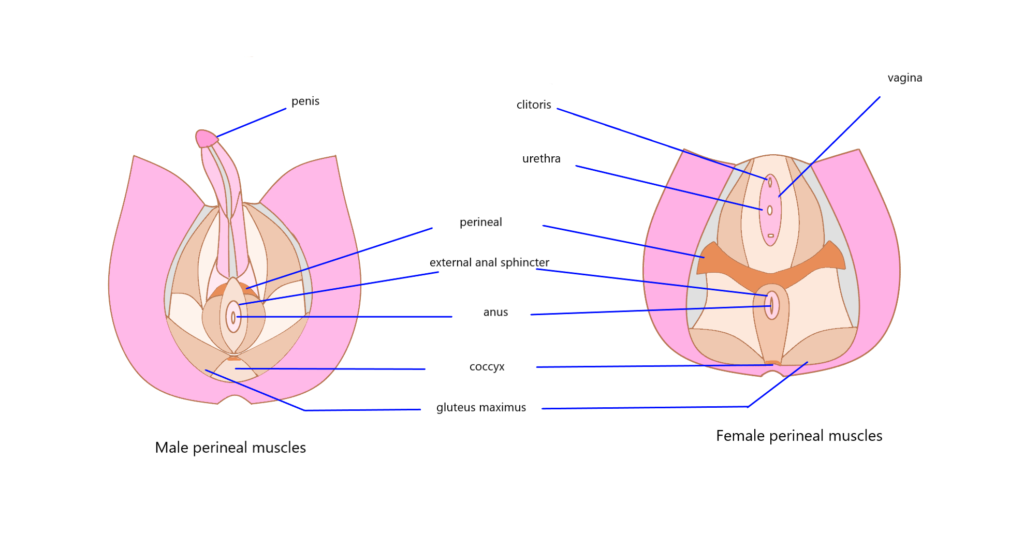The anatomy of the anus is fundamentally similar in both males and females, but there are some distinctions primarily related to the surrounding structures and their functions. Below is a detailed examination of the anatomical features of the anus in both sexes.
General Structure of the Anus
The anus is the external opening of the rectum, located at the end of the gastrointestinal tract. It serves as the exit point for feces from the body. The anatomy includes two primary sphincters that control defecation:
- Internal Anal Sphincter: This is an involuntary muscle that maintains constriction of the anal canal.
- External Anal Sphincter: This is a voluntary muscle that allows for conscious control over bowel movements.
Both sphincters work together to regulate fecal expulsion, with additional support from pelvic floor muscles.

Differences Between Male and Female Anatomy
- Location Relative to Other Structures
- In Males: The anus is located between the scrotum and the perineum, which includes structures such as the penis.
- In Females: The anus is situated between the vulva (external female genitalia) and the perineum.
This difference in positioning affects various physiological functions, including childbirth in females, where perineal tearing can occur during delivery.
- Perineal Body
The perineal body, a fibromuscular structure, plays a crucial role in supporting pelvic organs:
- In Males: The perineal body lies between the bulb of the penis and the anus.
- In Females: It is found between the vagina and anus, providing structural support during childbirth.
- Erogenous Zones
Both sexes have sensitive nerve endings around their anal regions:
- In Males: The proximity to prostate tissue makes anal stimulation potentially pleasurable due to indirect stimulation.
- In Females: Stimulation may also be pleasurable due to proximity to vaginal structures.
Microanatomy
The microanatomy of both male and female anuses shows similar histological features:
- Above the dentate line (pectinate line), there is columnar epithelium typical of intestinal mucosa.
- Below this line, there is stratified squamous epithelium that transitions into skin-like tissue devoid of hair follicles or sweat glands.
Blood Supply and Innervation
Both males and females receive blood supply from similar sources:
- The inferior rectal artery, a branch of the internal pudendal artery, supplies blood to both sexes.
Innervation also follows similar patterns:
- Sensory innervation comes from branches of the pudendal nerve (S2-S4), which provides sensation to both male and female anal regions.
Clinical Considerations
Understanding these anatomical differences can be critical in clinical settings:
- Anal Fissures: These can occur in both sexes but may present differently based on anatomical variations.
- Hemorrhoids: Both males and females can develop hemorrhoids; however, pregnancy-related changes in females can increase risk factors.
- Surgical Procedures: Knowledge about these anatomical differences aids surgeons during procedures involving anal surgery or childbirth interventions.
In summary, while there are notable similarities in anal anatomy between males and females, key differences exist primarily due to surrounding reproductive structures and functional roles within each sex’s physiology.